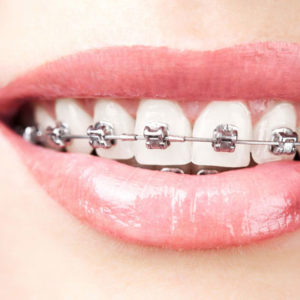While we treat patients of all ages, teenagers are the most common here at The Orthodontic Group of Chester County. This is because orthodontic treatment is ideal for teens. It is a time of quick growth and change for them, which means it’s easier to shape their smile and bite.
If your child is in need of braces, you’re probably both wondering what the best option is. Teens can get nervous about the way they look and what others will think of them.
The good news– the options are far better than they used to be. In this article, we’ll discuss the different braces options for teens so that you can learn more about the best treatments.
WHY DO TEENS NEED BRACES?
Braces can solve a number of oral health issues, including:
Overly crowded and crooked teeth
Gaps between teeth
Overbite (where the upper teeth bite over the lower teeth)
Open bite (where some teeth cannot properly touch each other)
Underbite (where the lower teeth stick out ahead of the upper teeth)
Crossbite (where both the lower and upper teeth are misaligned)
Fixing these issues carries several benefits. First, it improves the way your teen’s smile will look. Many studies have shown that people with healthier smiles have more confidence and often enjoy more success in work and in their communities.
But it’s not just about the way your child’s teeth look. Having a good smile also has several health benefits, such as:
Teeth are easier to clean and therefore less likely to get cavities or decay
Bad bites can create unnecessary pressure on certain teeth – this can lead to chipped teeth or sore jaw muscles
Straighter teeth contribute to more clear speech
We often recommend braces in a patient’s teenage years because it is a time of change. This means the treatment can happen more quickly than in their adult years, and they’ll also be surrounded by other teens who have braces.
Now we’ll discuss the most common types of braces for teens.
METAL/TRADITIONAL BRACES
When most people think of braces, they think of metal or traditional braces. If you had braces as a teen, you probably had metal braces, but you should know they have progressed since then and are now lighter in weight and structure than when you were a teen.
They are made from metal brackets that are attached to each tooth and then connected by a thin archwire, which pushes and pulls on the teeth to slowly move them into the correct position.
The archwire is connected to the brackets using tiny elastics known as ligatures or o-rings. Braces need to be tightened occasionally to keep the teeth moving into the appropriate place. These elastics come in many different colors, which many teens actually love. They can choose the colors of their high school, their favorite professional sports team, or seasonal colors to go along with upcoming holidays.
Metal braces are a great choice because they are the most economical. They are also the ideal choice for younger teens because they are the most flexible and can change with your child’s needs. The downside is that they stick out the most; if your teen is really nervous about how they look, it might be worth considering the following two options.
CERAMIC BRACES
Ceramic braces work the same way as metal braces. The primary difference is that the brackets are made from a clear, transparent ceramic material. This means the braces are far less noticeable and blend in better with your child’s teeth.
Ceramic braces are more expensive than metal braces and can stain if not taken care of properly, but they could be a great choice for teens who don’t want shiny metal flickering from the front of their teeth.
INVISALIGN
One method that is growing in popularity is the use of invisible aligners. Treatment with invisible aligners can take anywhere from a few months to 2 years. Your orthodontist takes impressions of your teeth and creates a plan to correct the bite and alignment of the teeth over time. Every two weeks, your teen will receive a new, clear, plastic mouthpiece that they wear on their teeth. Each one slowly helps move the teeth towards the finished smile.
There are a few great benefits of invisible aligners. They are clear and not nearly as noticeable as traditional braces or even ceramic braces. They can also be removed, which makes dental care and eating a much easier process for teens. The problems— invisible aligners typically cannot fix severe problems and tend to be the most expensive.
WHAT OPTION IS BEST FOR YOUR CHILD?
Now the question remains– which option is best for your child? Perhaps the best way to determine this is to discuss your options with an orthodontist you trust. You’ll want to understand your teenager’s concerns about getting braces and consider your budget. After your orthodontist examines your child’s mouth, they can recommend what they think is best.
If you’re looking for an orthodontist you can trust in the Kennett Square, Lionville, or West Chester areas, then look no further than The Orthodontic Group of Chester County.
Dr. Murray is an accomplished orthodontist with years of experience and a passion for working with families and teens to provide great smiles that last a lifetime. Our priority is to make a positive impact in your child’s life by enhancing self-confidence, self-esteem and overall dental health.
Contact us today to schedule an appointment…we’d love to meet you.
SOURCES:
Types of Braces
What are the different types of braces?
Invisalign for Teens
Posted by Chester County Orthodontics




